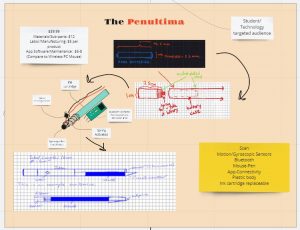PURPOSE
To synthesize and extract information from the “big picture” of open-ended problems and increase online engagement.
DESCRIPTION
Online collaborative learning activities that encompass a set of open-ended problem that seeks to find a solution from various perspectives in a co-creation environment.
UNDERLYING EDUCATIONAL THEORIES
active learning, team-based learning, collaborative problem solving, peer learning, connectivism
PEDAGOGICAL BENEFITS
- Collaborative, synchronous online ideation can enhance students’ achievement of learning goals and the development of essential skills such as teamwork, creativity, and digital skills.
- With a wide variety of provided online tools, students have flexible options to present and establish the relationships between perspectives in various formats.
- Students can choose to pursue and seek out options of their own interests. In addition, they can impose constraints, assumptions and limitations on the problems that they set up.
- Collaborative, synchronous online ideation can be enjoyable, interactive and provide open space tools for contemporary learning. It also has a slightly low learning curve which students can pick up almost immediately.
- Collaboration can facilitate peer assessment and peer learning as it shows the progress of each participant in real-time. It also provides a digital footprint that can be traced to evaluate the performance of each participant.
- Information from the internet search can be directly imported to the platform making it easier to consolidate the ideas, references, sketches, and analysis within one location.
STRATEGIES FOR IMPLEMENTATION
- A collaborative, synchronous online ideation is a flexible tool that can accommodate various types of open-ended problems such and design thinking, ideation, mind mapping, affinity diagram, root cause analysis, etc.
- An introductory session on how to use the platform should be given as it might be a small learning curve for some students. Instructors should closely pay attention to all participants at this stage. A stable internet connection is recommended to all participants.
- A collaborative, synchronous online ideation is used as a secondary platform to supplement synchronous video or audio conferencing that lacks the capabilities of providing such functions. It can also be used as a primary platform in asynchronous ideation.
- The questions can be either to inspire the participants in the introductory session of the course or integrated with other course elements. The pre-activity presentation should clearly cover the definitions, scopes, applications, and questions that encompass the big picture. The instructors should clearly state the expectations and outcomes of the activity to ensure a smooth transition between subtasks during the activity.
- In the collaboration board, subtasks with guided explanations along with some examples can be provided to keep the scope of the problems manageable in a timely manner. There should be a posted time limit on each subtask to ensure that participants are not too invested in one specific aspect of the problem and to increase productivity in the class time.
- Within a group, participants likely subdelegate the work and focus on the tasks they are comfortable with. Instructors, however, should encourage them to step up and try some uncomfortable tasks that they are not familiar with.
- At the later stage of the course, collaborative, synchronous online ideation should be promoted to be used within a group without the instructor’s assistance such as the ideation phase in the capstone design courses.
EXAMPLE
Lab 1: Design Thinking Activity for ME/TAM 270 students
REFERENCES AND FURTHER READING
Miro, “Miro: An Online Visual Collaboration Platform for Teamwork.” www.miro.com.
